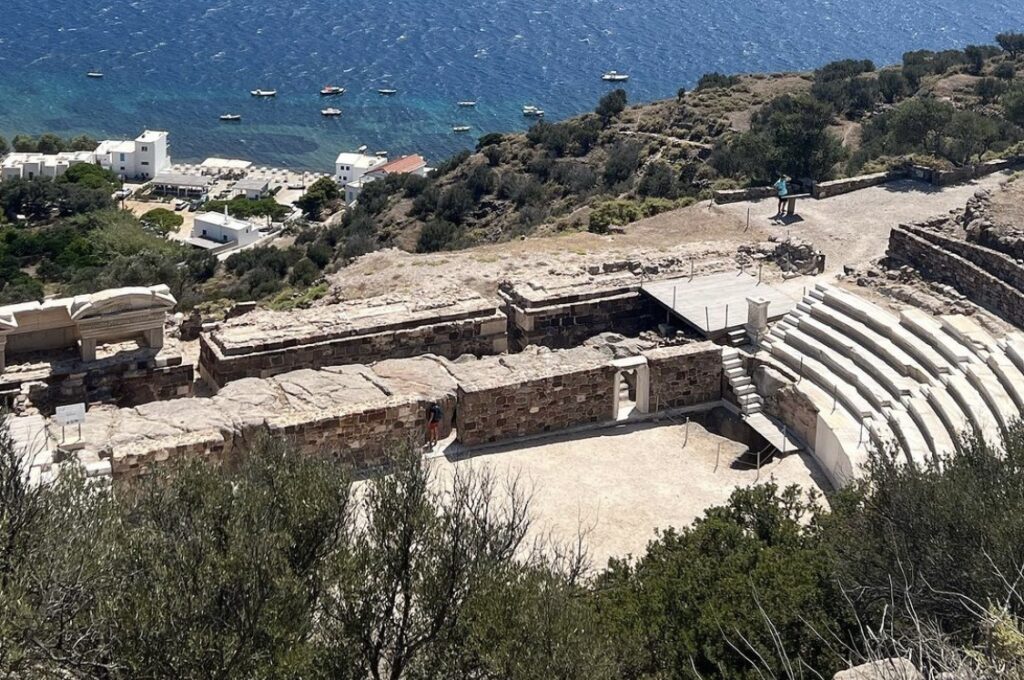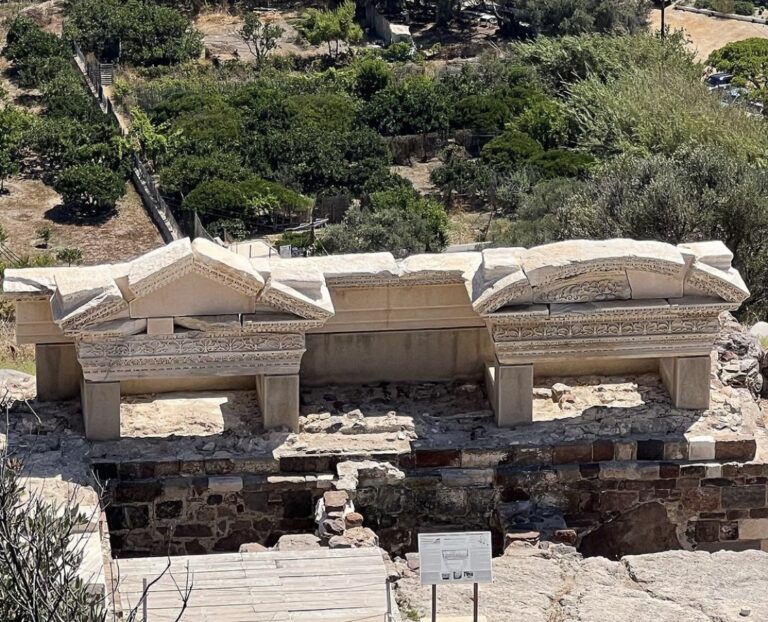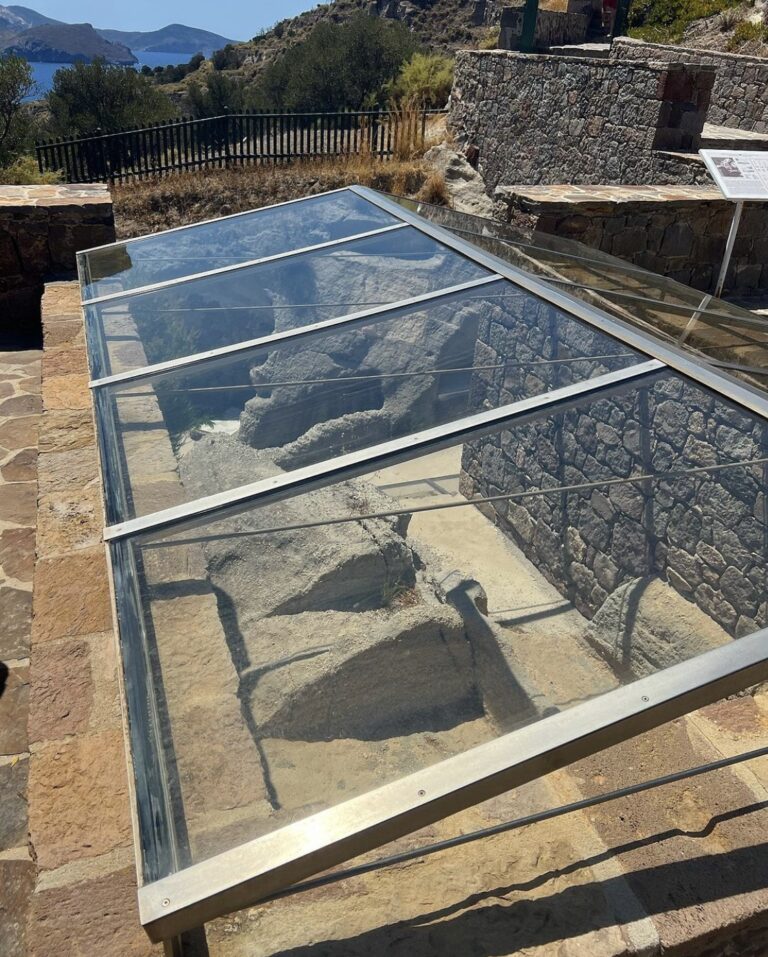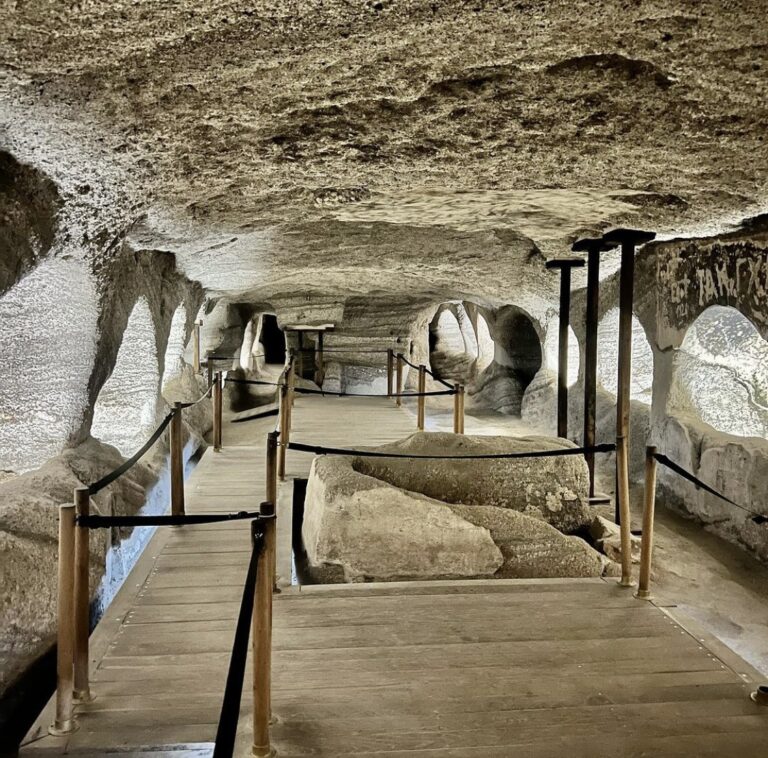Ancient Roman Theatre Milos

We created our blog with the purpose to present you all the things to do in Milos island, Greece! Find at this page all you need to know about the ancient Roman Theatre Milos!
Ancient Roman Theatre Milos, The Ancient Theatre of Milos
Discover Milos island , one of the aegean islands is a treasure trove of wonders. Breathtaking natural landscapes waiting to be explored. The ancient roman theater Milos situated in the village of Tripiti stands as a testament to the islands history and cultural heritage and is one of the most historical sites on the island . This preserved theater accommodating more than 700 spectators was constructed during the Hellenistic era and served as a venue for musical and theatrical performances. By visitors have the opportunity to delve into the catacombs—a remarkable site dating back to Roman times—which happen to be Greeces largest catacombs. Another noteworthy attraction on this island is the ancient city of Klima—a place steeped in history that was once founded as a city by the Athenians in the 5th century BC. From its ruins someone can enjoy the amazing view of the bay of Milos overlooking the sea . The village of Tripiti itself exudes charm, with its Cycladic architecture, winding streets and picturesque churches. All Milos caters not only to history enthusiasts but also nature lovers who seek an unforgettable fusion of historical marvels and natural splendor. Whether you’re exploring remnants or basking in the beauty of its bay Milos guarantees an enthralling experience filled with captivating narratives from its past and magnificent scenery that will leave you spellbound.
Ancient Roman Theatre of Milos

The ancient roman theatre milos is located on top of Klima village and is one of the best-preserved ancient theatres in Greece with up to nine raws of white marble seats with acoustics that would impress any spectator. With its origins dating to the 3rd century BC this historical landmark holds significance in the islands history. It is capable of accommondating an audience around 700 people and it stands as one of the significant and well preserved historical sites, on the island. The parts of the theatre that remain up to nowadays include the orchestra, stage area and seating arrangement providing insights into both cultural practices during times.
Serving as a testament to the islands history and culture visitors from over the globe continue to be captivated by its beauty and seek to learn more, about ancient Roman civilization. The cultural events that are hosted at the well-preserved roman theatre is a must visit as you are on the island of milos and it would be highly recommended to check the event calendar of the island once you arrive in order to make sure that you will find a seat and get the chance to enjoy the event as you already are on vacation on the island.
Venus of Milo
The Venus de Milo, also known as the Aphrodite of Milo is a Greek sculpture that represents the goddess of love and beauty. It is believed to have been crafted by Alexandros of Antioch, a sculptor, from around 100 BC. One intriguing aspect of this statue is that its arms have been lost over time adding to its allure. The Venus de Milo is renowned for its pose. Beautifully draped clothing highlighting the eternal beauty of the goddess. Today the statue is in the louvre Museum of Paris. It has been captivating visitors since it was discovered on the island of Milos in 1820. A local farmer stumbled upon it while searching for marble blocks in the ancient roman theater. Since then people have been fascinated by the charm and timeless appeal of the Venus de Milo.
The excavation at the cite of the ancient roman theatre Milos
The excavations at the cite of the ancient roman theatre Milos began in 1816 and 1817 by the German architect Carl Haller von Hallerstein. The monument was donated to the King of Greece, King Otto, son of the future King of Bavaria, Ludwig 1. The recent excavation conducted at the theater site, in the city of Milos has brought forth a treasure trove of information regarding the Roman era. The team of archaeologists has successfully unearthed a stage seating areas and an array of artifacts that offer insights into the entertainment and cultural activities that took place during that time. These findings have not shed light on the design aspects of the ancient roman theater but have also provided a glimpse into the social and political dynamics prevailing in Milos during the Roman era. This excavation holds significance for historians and archaeologists alike as it adds to our knowledge, about this city and its rich cultural heritage.

The Catacombs

The Catacombs of Milos hold significance as an underground network of tunnels and rooms situated on the beautiful Greek island of Milos. These catacombs were originally established as a burial ground, in the 1st century AD. Over time they became a sanctuary and place of worship for early Christians. This vast maze like structure gives us a captivating glimpse, into the islands past. Sheds light on the lives of its inhabitants. Visitors can explore these catacombs to witness burial niches and intricate inscriptions meticulously etched into the walls. The Catacombs of Milos serve as an enthralling site offering an opportunity to immerse oneself in the islands history. Prophet elias holy capel is located on the hillside near the catacombs around 700-meter walk from the catacombs that attracts many visitors each year that visit the archaeological site and it would be higlhy recommended to visit for everyone who will be in the area.
Archaeological Museum in Plaka, Klima ancient city, Trypiti
The Archaeological Museum in Plaka holds a collection of artifacts from the city of Klima which dates back to the Hellenistic period. The museum is situated near the settlements of Tripiti and Klima providing visitors with a chance to explore the captivating history of this region. Showcased artifacts from the city are prominently displayed in the entrance foyer of the archaeological museum, offering a glimpse into the everyday lives and cultural practices of its inhabitants. The museum provides a view of discoveries, from Klima including pottery, sculptures and architectural elements unearthed at the site. Don’t miss out on exploring Trypiti and Klima themselves—they offer insights into ways of life and remnants of the citys infrastructure. Immerse yourself in the richness of this area. Gain a deeper understanding of the thriving ancient civilization that once flourished here.
The location, Ancient Roman Theatre Milos
Things to do in Milos, Boat tour Milos

A very nice option while being on the island is to take a boat tour around the island. There are a lot of different companies that offer different trips around the coastline of the island and stop at the amazing beaches. Some of them offer full day trips, some others half day and some others private trips. In general you will find the option that suits better your schedule. In order to take a right decision on which company to choose see reviews and photos from the online sources. All of them till today start from Adamantas, located in the center of the island. You can walk along the port and find all the available options.
For the best boat tour in Milos, we will be more than happy to sail with you!! Find our Milos cruises here.


